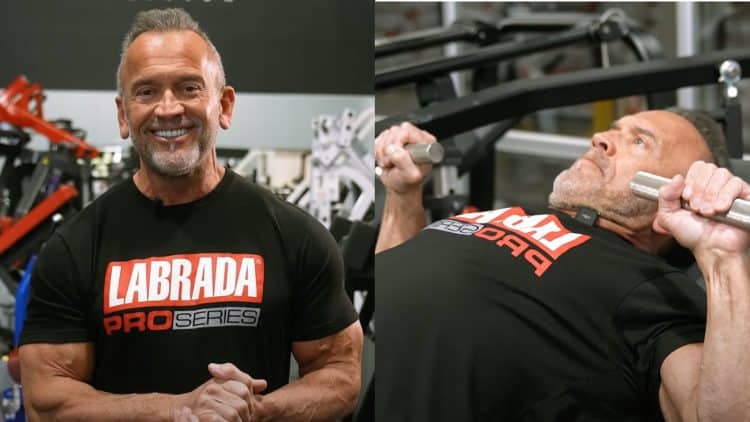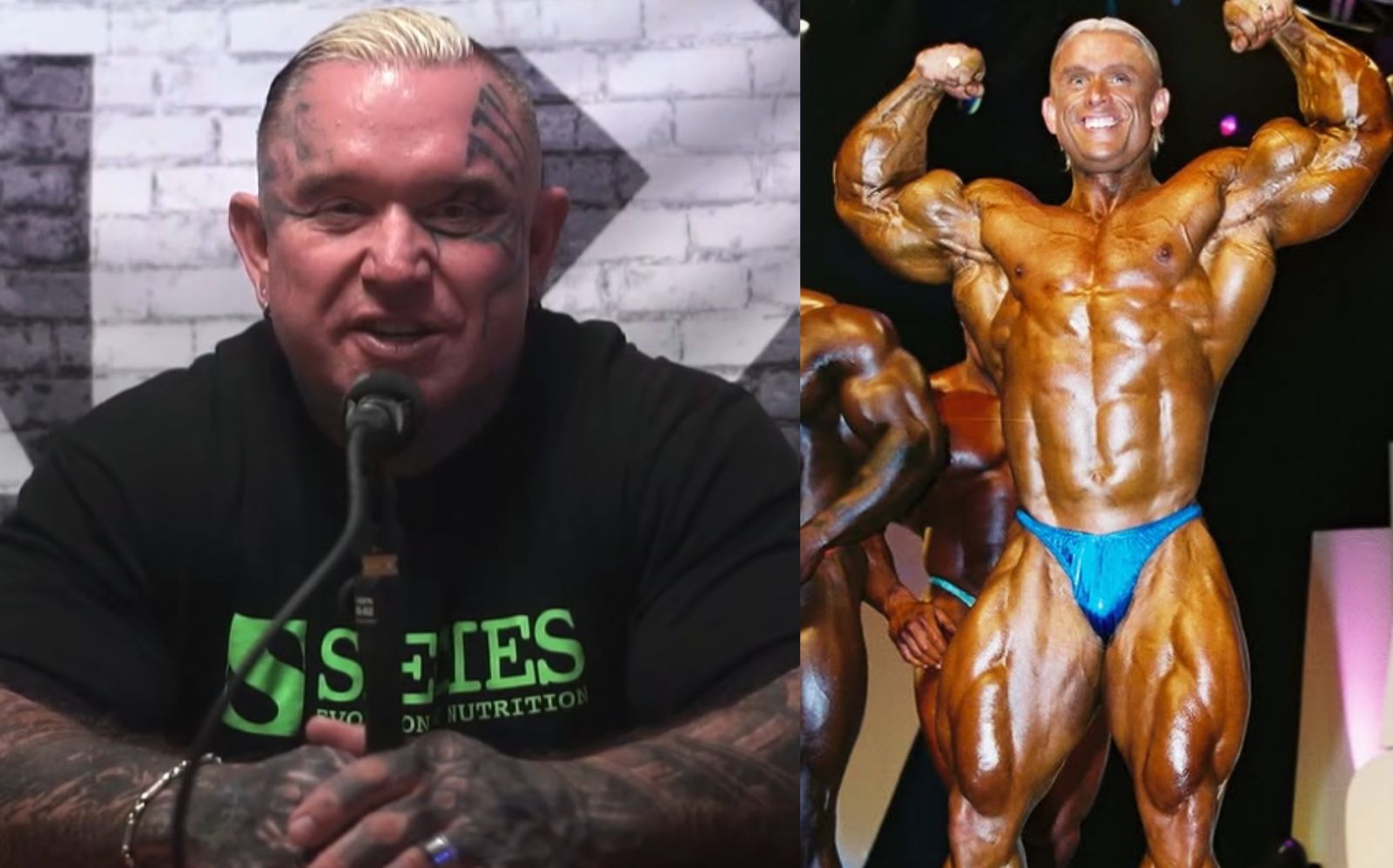Lee Labrada stands as a titan in the realm of bodybuilding, renowned for his sculpted physique and unwavering dedication. In a recent YouTube video, Lee Labrada shared eight health benefits of strength training. He also discussed strength training guidelines that help maximize muscle growth and strength.
“It is no secret that I have always loved working out. I never needed a scientific study to tell me that it was good for my health, my energy levels, my mind, and my mood which all makes sense because we’re designed to be physically active.”
From an early age, Lee Labrada displayed a passion for physical fitness and athleticism. His journey into bodybuilding began in his teenage years where he honed his craft with relentless determination and unyielding work ethic. Labrada’s commitment to excellence saw him rise through the ranks swiftly, earning him numerous accolades and championships throughout his illustrious career.
Labrada’s timeless physique is a testament to his unwavering commitment to the sport. With his perfectly proportioned muscles, symmetry, and definition, he became a symbol of excellence in bodybuilding. His approach to training and nutrition was methodical and meticulous, setting a standard for aspiring bodybuilders worldwide.
Level Up Your Fitness: Join our 💪 strong community in Fitness Volt Newsletter. Get daily inspiration, expert-backed workouts, nutrition tips, the latest in strength sports, and the support you need to reach your goals. Subscribe for free!
Lee Labrada Outlines 8 Benefits of Strength Training
Eight Health Benefits Of Strength Training
- Increase Lean Body Mass
- Boost Basal Metabolic Rate
- Control Blood Sugar Levels
- Reduces Abdominal Fat
- Enhances Cardiovascular Health/ Lowers Blood Pressure/ Enhances Blood Lipid Profiles
- Lowers Systemic Inflammation
- Build Stronger Bones
- Helps Improve Balance
Beyond his achievements on stage, Labrada’s impact extends far beyond the confines of bodybuilding. As a mentor and fitness expert, he has inspired countless individuals to pursue their goals and live healthier, more fulfilling lives.
In a recent YouTube video, Lee Labrada shed light on the importance of physical exercise and the role it plays in mental health.
“Being strong and capable gives you a much better quality of life, not to mention the benefit of having a fit and healthy appearance. In this video, you are going to learn eight incredible things that strength training can do for you which not only includes the obvious, which is getting stronger, but also benefits for your mind, body, and overall health” Lee Labrada said.
“With nearly one in six Americans taking an antidepressant, the connection between working out and your brain chemistry, mood, and emotion may not be so obvious but case in point when a loved one is out of shape or overweight it is easy to suggest hey would you like to come to the gym with me sometime, but is working out the first thing that comes to your mind when you see a friend struggling with depression or anxiety? Probably not, but according to a growing pool of scientific data and research, it probably should be, so let’s talk about the benefits of strength training.”
Lee Labrada then explains how strength training is making a comeback and for a good reason considering how much it does for physical and mental health.
“At the risk of maybe sounding a bit retro, do you know what one of the hottest trends in fitness is right now? If you said strength training, you’re right. In this world of fitness fads, strength training is making a strong comeback for many reasons. Let me share some of the most important reasons why strength training is the single most effective health and anti-aging boosting form of exercise known to man.”
“Heres eight incredible things that strength training can do for you.”
Lee Labrada Goes Over Strength Training Guidelines
Now that Labrada has explained why strength training is so beneficial to physical, mental, and emotional health, he goes over some pointers for strength training to ensure not only safety but to also maximize results.
Compound Exercises
First, Lee Labrada goes over what compound exercises are and what they do for the muscles.
“Well let’s talk about some strength training guidelines. First, compound exercises active several muscles group collaboratively and are a corner stone of any strength training program. Compound exercises usually involve movement around more than one joint and these exercises are also known as power exercises.”
“They include the squat, the leg press, bench press, shoulder press, deadlifts, and rows just to name a few. Make compound movements the foundation of your training as they are the best exercises known to increase strength.”
Free Weights VS. Machines
Next, Lee Labrada talks about free weights versus machines and the benefits you can get from using either.
“Free weights are most commonly used with strength training but machines can also be a good substitute for the same movements, especially machines that allow unilateral independent rep movement. Free weight training exercises generally recruit more stabilizer muscles along with the larger prime movers themselves but that doesn’t mean that using free weights is essential to getting great results.”
“Machines are especially helpful for safety reasons, if you’re older, or working out by yourself. it is more important that you find movements that you enjoy so that you can really shift your focus to executing each exercise correctly.”
Reps and Sets
Finally, Lee Labrada goes over the importance of reps and sets and how workouts should be focused on intensity.
“One main objective of strength training is to train with enough intensity to stimulate your muscles and to adapt and get stronger. This usually means workouts that are shorter but harder. After you’ve carefully warmed up it’s helpful to select weights that allow you to perform only 6-8 repetitions. Rest long enough to catch your breath in between sets and then start your next set.”
“So, how many sets? The answer is just enough to tire out the muscle without over training. For example for me I like to keep my chest workouts to about eight sets. My back workouts to about 10 sets and then the bicep and tricep workouts to six sets each, shoulders eights sets, and then the quads and the hamstrings to about six to eight sets each.”
Before wrapping up, Lee Labrada shares some last-minute tips to keep in mind while working out.
“Remember you can either train hard or you can train long but it is impossible to do both. As your training progresses you can add in more advance techniques to increase intensity such as train to failure, forced reps with a spotter, super setting, or even peak contraction.”
“Strength is never a bad thing so building and maintaining strength no matter what your age is should always be one fo the goals of your program along with enjoying the movements of your workout.”
Now that Lee Labrada is retired, he has shifted his focus to helping others achieve their goals but also encourages the older generation to stay healthy and fit. Labrada recently shared a workout video for back and biceps targeting those over 50 years old. He made sure to point out that as the body gets older the need for adjustments increases.
Lee Labrada’s guidance is invaluable considering the longevity and decades of experience he has. Given the physical and mental benefits associated with strength training, Labrada credits it as a powerful weapon in the realm of anti-aging.
RELATED: Lee Labrada Offers ‘3 Critical Steps’ for Burning Off ‘Unwanted Body Fat on Your Chest’
To watch Lee Labrada’s full video click the link below:
Learn more about strength training:
- Strength Training for Women Over 50
- Get Lean: How to Turn Strength Training into a Fat-Burning Workout
- Low-Volume Strength Training: The Secret to Building Muscle Efficiently
- Strength Training for Golfers: Swing Into Shape With These Exercises & Training Program
- 6 Powerlifting Strength Training Programs – Beginner to Advanced
- How to Warm Up for Strength Training
- Hypertrophy vs. Strength Training
- High-Frequency, Low-Volume Strength Training
- Functional Strength Training: What It Is, How to Do It









